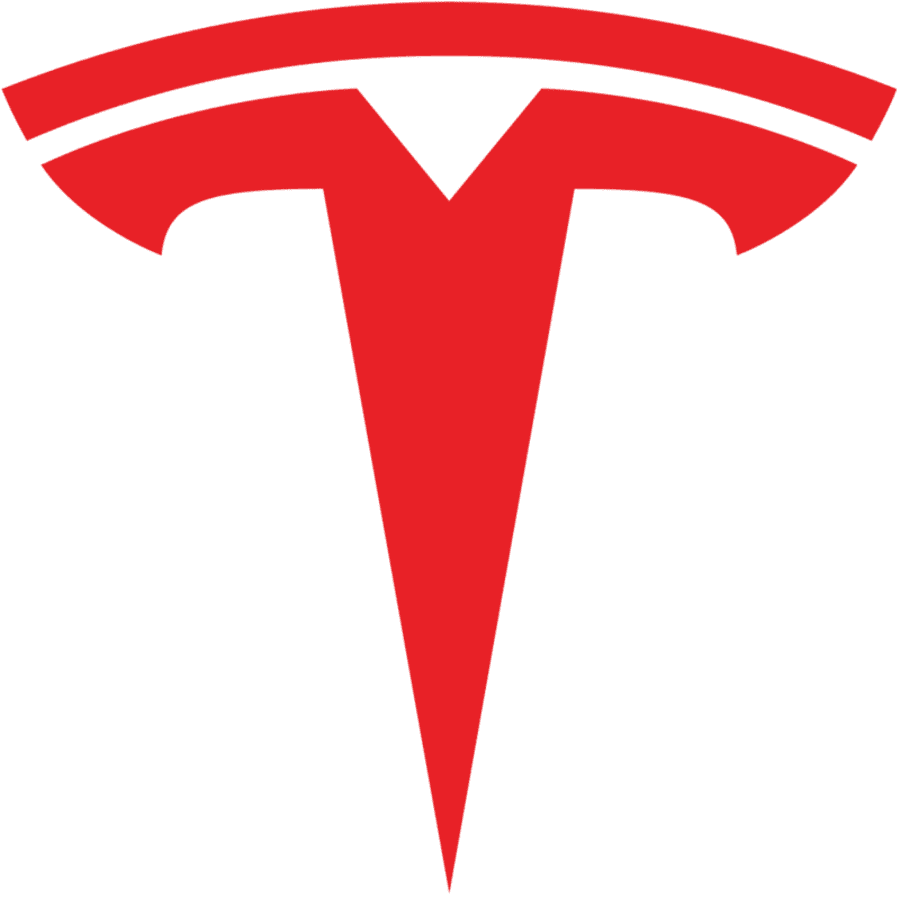
Strategic Patent Integration: Tesla’s Balanced Openness, Control, and Competitive Advantage
Tesla, Inc., a global leader in electric vehicles (EVs), energy storage, and renewable energy, has redefined the automotive and energy industries through its innovative technologies and business model. With a market capitalization of approximately $1.2 trillion as of 2024, Tesla commands a significant share of the global EV market, delivering 1.8 million vehicles in 2024 alone. Central to Tesla’s success is its strategic integration of a patent portfolio comprising over 3,000 patents, covering battery technology, autonomous driving, manufacturing processes, and renewable energy systems. Unlike traditional firms that guard intellectual property (IP) aggressively, Tesla’s 2014 decision to open-source many of its patents reflects a bold strategy to accelerate industry growth while reinforcing its market leadership.
Tesla’s Patent Portfolio: A Strategic Asset
Tesla’s patent portfolio is a carefully curated collection of IP that protects its core innovations while supporting its mission to “accelerate the world’s transition to sustainable energy.” Key areas of focus include:
- Battery Technology: Patents cover lithium-ion battery management, thermal regulation, and high-efficiency cell designs, critical to Tesla’s Powerwall, Powerpack, and vehicle batteries.
- Autonomous Driving: Patents protect Full Self-Driving (FSD) software, neural networks, and sensor systems, enabling Tesla’s leadership in Level 4 autonomy.
- Manufacturing Processes: Innovations like the Gigafactory’s automated production lines and “megacasting” (large-scale die-casting) reduce costs and scale production.
- Energy Systems: Patents in solar roofs, inverters, and grid storage (via SolarCity acquisition) support Tesla’s renewable energy ecosystem.
Tesla’s portfolio, while smaller than competitors like Toyota (~20,000 patents), is highly strategic, focusing on high-impact technologies that drive differentiation and scalability. The company’s 2014 open-source pledge, announced by CEO Elon Musk, made many patents freely available under a “good faith” condition, encouraging competitors to adopt Tesla’s standards and grow the EV market. However, Tesla retains key defensive patents, particularly for FSD and battery tech, to protect its technological edge.
Strategic Integration of Patents into Business Operations
Tesla’s integration of its patent portfolio is a masterclass in aligning IP with business objectives, leveraging patents to enhance innovation, market share, and industry influence. Below are the key strategies Tesla employs, each contributing to its competitive advantage.
1. Open-Source Strategy to Expand the EV Market
Tesla’s decision to open-source patents in 2014 was a radical departure from traditional IP strategies, designed to stimulate EV adoption and grow its addressable market. By allowing competitors like Rivian, NIO, and BYD to use its patented technologies—such as battery management systems and charging protocols—without licensing fees, Tesla fostered an ecosystem where EVs became mainstream. This strategy:
- Increased Market Size: The global EV market grew from 0.7 million units in 2014 to 14 million in 2024, expanding demand for Tesla’s vehicles and infrastructure like the Supercharger network, which now spans 50,000+ stalls worldwide.
- Standardized Technology: Tesla’s patents, such as those for DC fast-charging, set de facto industry standards, giving Tesla influence over EV infrastructure and compatibility, reinforcing its market leadership.
- Enhanced Brand Value: The open-source move positioned Tesla as a visionary leader, attracting customers and investors, with its stock rising 1,200% since 2014.
This approach aligns patents with Tesla’s mission, driving market share by creating a larger, more accessible EV market where Tesla remains the dominant player, commanding ~20% of global EV sales.
2. Defensive Patenting to Protect Core Innovations
While open-sourcing many patents, Tesla retains a robust defensive portfolio to safeguard critical technologies, particularly in FSD and battery production. This selective approach ensures:
- Competitive Differentiation: Patents for FSD’s neural networks and vision-based autonomy protect Tesla’s lead in autonomous driving, where it competes with Waymo and Cruise. Features like Autopilot and FSD, exclusive to Tesla vehicles, drive premium sales, contributing to a 15% revenue increase in 2024.
- Barriers to Entry: Patents for Gigafactory processes, such as megacasting and dry electrode batteries, deter competitors from replicating Tesla’s cost efficiencies. For example, Tesla’s $25,000-per-vehicle production cost is 30% lower than legacy automakers, enabling price cuts that boosted market share.
- Litigation Deterrence: Tesla’s defensive patents discourage infringement lawsuits from rivals. In 2023, Tesla settled a minor patent dispute with a Chinese EV startup out of court, leveraging its IP to avoid protracted litigation.
By maintaining defensive patents, Tesla protects its technological edge, ensuring that competitors cannot erode its ~20% market share in the premium EV segment.
3. Cross-Functional Collaboration for Innovation
Tesla integrates its patent portfolio through close collaboration between engineering, legal, and business teams, ensuring that IP supports product development and market expansion. This interdisciplinary approach includes:
- R&D-Driven Patenting: Tesla’s $4 billion R&D budget in 2024 fuels innovations like solid-state batteries and AI-driven FSD, which are patented to secure first-mover advantages. Engineers work with legal teams to file patents that align with product roadmaps, such as the Cybertruck’s exoskeleton design.
- Commercialization: Business teams leverage patented technologies to enhance product offerings. For example, the Supercharger network’s patented fast-charging tech locks in customers, as competitors’ chargers are slower or incompatible, driving Tesla’s market dominance.
- Marketing Synergy: Tesla’s marketing emphasizes patented features like FSD and 4680 battery cells, reinforcing its innovation narrative. This cross-functional synergy helped Tesla achieve a 50% year-over-year increase in Model Y sales in 2024.
This collaboration ensures that patents translate into tangible business outcomes, from product differentiation to customer loyalty, amplifying Tesla’s market presence.
4. Infrastructure and Ecosystem Development
Tesla’s patents support its vertically integrated ecosystem, including vehicles, charging networks, and energy storage. Key integrations include:
- Supercharger Network: Patents for high-voltage charging and thermal management enable Tesla’s Superchargers to deliver 250 kW, outpacing competitors’ 150 kW average. This infrastructure advantage locks in customers, as Tesla owners enjoy exclusive access, boosting vehicle sales and market share.
- Energy Storage and Solar: Patents from the 2016 SolarCity acquisition, covering solar roofs and grid-scale storage, enable Tesla’s Powerwall and Megapack products. These offerings diversify revenue, with energy storage revenue growing 100% in 2024, and strengthen Tesla’s brand as a clean-energy leader.
- Software Integration: Patents for over-the-air updates and FSD software allow Tesla to enhance vehicle performance post-sale, increasing customer satisfaction and retention. This ecosystem approach drove a 90% customer retention rate in 2024.
By leveraging patents to build a cohesive ecosystem, Tesla creates a flywheel effect where each component reinforces the others, expanding its market footprint.
5. Future-Proofing for Emerging Markets
Tesla’s patent strategy anticipates technological and market shifts, ensuring long-term relevance. Key efforts include:
- Autonomous Mobility: Patents in neural network training and vehicle-to-everything (V2X) communication position Tesla for the robotaxi market, projected to reach $1 trillion by 2030. The planned 2026 launch of Tesla’s autonomous Cybercab leverages these patents, aiming to capture early market share.
- Next-Generation Batteries: Patents for solid-state and silicon-anode batteries promise 50% higher energy density, enabling longer-range EVs and reducing costs. Tesla’s 2024 patent filings in this area signal readiness for mass-market adoption.
- Renewable Energy Expansion: Patents in solar inverters and grid integration support Tesla’s push into virtual power plants, aligning with global decarbonization trends. This diversification mitigates risks from EV market saturation.
This forward-looking approach ensures Tesla’s patents remain relevant, sustaining its leadership as competitors like BYD and Volkswagen intensify efforts.
Impact on Market Share and Business Outcomes
Tesla’s strategic patent integration has delivered measurable results:
- Market Share Growth: Tesla holds ~20% of the global EV market, with 1.8 million vehicles delivered in 2024, up 38% from 2023. Its open-source strategy grew the EV market, indirectly boosting Tesla’s sales, while defensive patents protected its premium segment.
- Revenue and Profitability: Patented technologies enabled cost reductions (e.g., $4,000 per vehicle via megacasting), driving a 15% revenue increase to $97 billion in 2024 and a 25% profit margin, the highest among automakers.
- Brand Leadership: Tesla’s IP reinforces its reputation as an innovator, with 70% of U.S. EV buyers considering Tesla first, per a 2024 JD Power survey.
- Competitive Barriers: Patents deter copycats, particularly in China, where Tesla maintains a 10% share despite BYD’s rise. The Supercharger network’s IP-driven exclusivity further entrenches Tesla’s dominance.
These outcomes highlight how Tesla’s patent integration drives market share by fostering innovation, reducing costs, and creating customer lock-in.
Critical Examination of Tesla’s Strategy
While Tesla’s patent strategy is highly effective, it faces challenges and risks that warrant scrutiny:
- Risk of Open-Sourcing: By open-sourcing patents, Tesla has empowered competitors like BYD, which surpassed Tesla in EV sales in Q4 2023 (550,000 vs. 495,000 units). BYD’s use of Tesla’s battery management patents has narrowed the technological gap, threatening Tesla’s market share.
- Limited Patent Enforcement: Tesla rarely litigates, relying on defensive patents to deter infringement rather than pursuing lawsuits. This approach may weaken its ability to block copycats, especially in markets with lax IP enforcement like China, where local firms replicate Tesla’s designs.
- Portfolio Size Constraints: With only 3,000 patents, Tesla’s portfolio is smaller than competitors like Toyota or GM. This limits its defensive capabilities in protracted patent wars, particularly as legacy automakers scale EV production.
- Resource Allocation: Tesla’s $4 billion R&D budget, while substantial, is spread across vehicles, energy, and AI, potentially constraining patent filings compared to rivals. In 2024, Toyota filed 2,000 EV-related patents, outpacing Tesla’s 500.
- Market Saturation Risks: As EVs commoditize, Tesla’s reliance on patented features like FSD to justify premium pricing may face pressure. Competitors offering cheaper EVs could erode Tesla’s share, especially in price-sensitive markets.
Additionally, public sentiment on platforms like X reflects mixed views. Some praise Tesla’s open-source strategy as “genius for scaling EVs,” while others criticize it as “giving away the crown jewels,” highlighting the risk of empowering rivals. These perspectives underscore the need for Tesla to balance openness with strategic IP protection.
Tesla’s strategic integration of its patent portfolio is a cornerstone of its success, enabling it to lead the EV and clean-energy markets while driving innovation and market share. The open-source strategy has expanded the EV market, benefiting Tesla’s sales and infrastructure, while defensive patents protect its technological edge in FSD and battery production. Cross-functional collaboration ensures patents align with product development, and investments in emerging technologies like robotaxis and solid-state batteries future-proof the portfolio. With ~20% of the global EV market and $97 billion in 2024 revenue, Tesla demonstrates how IP can be a catalyst for industry transformation.
However, challenges like empowered competitors, limited enforcement, and a relatively small portfolio require careful navigation. Tesla must continue refining its strategy—perhaps by selectively licensing high-value patents or increasing filings in AI and energy—to sustain its lead. For patent strategists, Tesla’s approach offers valuable lessons in balancing openness with protection, aligning IP with mission-driven goals, and leveraging patents to shape markets. As Tesla navigates an increasingly competitive landscape, its ability to integrate patents strategically will determine its enduring dominance.
news via inbox
Nulla turp dis cursus. Integer liberos euismod pretium faucibua


